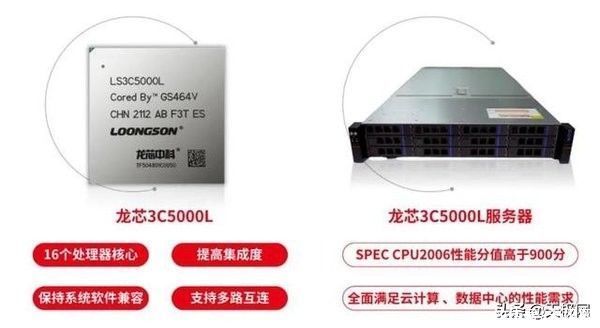еҫ—ж„ҸзҠ№е ӘеӨёдё–дҝ—пјҢиҜҸй»„ж–°ж№ҝеӯ—еҰӮйёҰгҖӮиҝҷзҜҮж–Үз« дё»иҰҒи®Іиҝ°ApplicationEventPublisherзҡ„дҪҝз”ЁеӯҰд№ зӣёе…ізҡ„зҹҘиҜҶпјҢеёҢжңӣиғҪдёәдҪ жҸҗдҫӣеё®еҠ©гҖӮ
д»ҠеӨ©еңЁзЁӢеәҸдёӯзңӢеҲ°жңүдҪҝз”ЁиҝҷдёӘжҺҘеҸЈпјҢеӯҰд№ дәҶдёҖдёӢпјҢж„ҹи§үдҪңдёәи§ӮеҜҹиҖ…жЁЎејҸзҡ„дёҖдёӘе®һзҺ°ж–№ејҸпјҢдҪҝз”Ёиө·жқҘиҝҳжҳҜдёҚй”ҷзҡ„гҖӮжҹҘдәҶдёҖдәӣиө„ж–ҷпјҢз»“еҗҲиҮӘе·ұзҡ„зЁӢеәҸпјҢеҲҶеӣӣдёӘйғЁеҲҶиҝӣиЎҢд»Ӣз»ҚгҖӮзӯүзЁӢеәҸиҮӘжөӢе®ҢжҲҗеҗҺпјҢиЎҘе……е®ҢжҲҗпјҢе…ҲеҶҷдёҖйғЁеҲҶгҖӮ
дёҖпјҡд»Ӣз»Қ1.ApplicationEventPublisherAware
ApplicationEventPublisherAware жҳҜз”ұ Spring жҸҗдҫӣзҡ„з”ЁдәҺдёә Service жіЁе…Ҙ ApplicationEventPublisher дәӢ件еҸ‘еёғеҷЁзҡ„жҺҘеҸЈпјҢдҪҝз”ЁиҝҷдёӘжҺҘеҸЈпјҢжҲ‘们иҮӘе·ұзҡ„ Service е°ұжӢҘжңүдәҶеҸ‘еёғдәӢ件зҡ„иғҪеҠӣгҖӮ
з”ЁжҲ·жіЁеҶҢеҗҺпјҢдёҚеҶҚжҳҜжҳҫзӨәи°ғз”Ёе…¶д»–зҡ„дёҡеҠЎ ServiceпјҢиҖҢжҳҜеҸ‘еёғдёҖдёӘз”ЁжҲ·жіЁеҶҢдәӢ件гҖӮ
2.ApplicationListener
ApplicationListenerжҺҘеҸЈжҳҜз”ұ Spring жҸҗдҫӣзҡ„дәӢ件订йҳ…иҖ…еҝ…йЎ»е®һзҺ°зҡ„жҺҘеҸЈпјҢжҲ‘们дёҖиҲ¬жҠҠиҜҘ Service е…іеҝғзҡ„дәӢ件зұ»еһӢдҪңдёәжіӣеһӢдј е…ҘгҖӮеӨ„зҗҶдәӢ件пјҢйҖҡиҝҮ event.getSource() еҚіеҸҜжӢҝеҲ°дәӢ件зҡ„е…·дҪ“еҶ…е®№
3.ApplicationEventPublisher
ApplicationEventPublisherжҳҜApplicationContextзҡ„зҲ¶жҺҘеҸЈд№ӢдёҖгҖӮиҝҷжҺҘеҸЈзҡ„дҪңз”ЁжҳҜпјҡInterface that encapsulates event publication functionality.
еҠҹиғҪе°ұжҳҜеҸ‘еёғдәӢ件пјҢд№ҹе°ұжҳҜжҠҠжҹҗдёӘдәӢ件е‘ҠиҜүзҡ„жүҖжңүдёҺиҝҷдёӘдәӢ件зӣёе…ізҡ„зӣ‘еҗ¬еҷЁгҖӮ
дәҢпјҡдҪҝз”Ё@EventLister1.зӨәдҫӢзЁӢеәҸгҖҗеҗҢжӯҘгҖ‘
жҺҘеҸЈпјҡ
package com.jun.practice.service; public interface StudentEventRegisterService { /** * еҸ‘еёғдәӢ件пјҢжіЁеҶҢеӯҰз”ҹ */ void register(); }
жҺҘеҸЈе®һзҺ°пјҡ
@Service
public class StudentEventRegisterServiceImpl implements StudentEventRegisterService {
@Resource
private ApplicationEventPublisher applicationEventPublisher;
@Override
public void register() {
Student student = new Student();
student.setId(1);
student.setName("tom");
applicationEventPublisher.publishEvent(student);
System.out.println("з»“жқҹдәҶ");
}
}
гҖҗApplicationEventPublisherзҡ„дҪҝз”ЁеӯҰд№ гҖ‘
зӣ‘еҗ¬пјҡ
@Component
public class StudentEventListener {
@EventListener(condition = "#student.id != null")
public void handleEvent(Student student){
try {
Thread.sleep(5000);
} catch (InterruptedException e) {
e.printStackTrace();
}
System.out.println(student);
}
}
жөӢиҜ•пјҡ
package com.jun.practice.controller; import com.jun.practice.service.StudentEventRegisterService; import io.swagger.annotations.Api; import io.swagger.annotations.ApiOperation; import org.springframework.web.bind.annotation.GetMapping; import org.springframework.web.bind.annotation.RequestMapping; import org.springframework.web.bind.annotation.RestController; import javax.annotation.Resource; @RestController @RequestMapping("/event") @Api(value = "https://www.songbingjia.com/android/дәӢ件зӣ‘жҺ§", tags = "дәӢ件зӣ‘жҺ§") public class EventListenerController { @Resource private StudentEventRegisterService studentEventRegisterService; @ApiOperation("@EventListenerжөӢиҜ•") @GetMapping("/registerUser") public void register(){ try { studentEventRegisterService.register(); } catch (Exception e) { e.printStackTrace(); } } }
ж•Ҳжһңпјҡ
2020-07-09 18:57:14.414INFO 16704 --- [nio-9094-exec-1] o.s.web.servlet.DispatcherServlet: Completed initialization in 12 ms Student(name=tom, id=1) з»“жқҹдәҶ
2.иҝӣиЎҢејӮжӯҘ
иҝӣиЎҢй…ҚзҪ®зұ»пјҡ
/** * ејҖеҗҜејӮжӯҘж”ҜжҢҒ */ @Configuration @EnableAsync public class AsyncEventConfiguration implements AsyncConfigurer { @Override public Executor getAsyncExecutor() { return Executors.newFixedThreadPool(10); } }
еңЁзӣ‘еҗ¬ж–№жі•дёҠж·»еҠ @Async
package com.jun.practice.listener; import com.jun.practice.dto.Student; import org.springframework.context.event.EventListener; import org.springframework.scheduling.annotation.Async; import org.springframework.stereotype.Component; @Component public class StudentEventListener { @Async @EventListener(condition = "#student.id != null") public void handleEvent(Student student){ try { Thread.sleep(5000); } catch (InterruptedException e) { e.printStackTrace(); } System.out.println(student); } }
ж•Ҳжһңпјҡ
з»“жқҹдәҶ Student(name=tom, id=1)
3.е®һйҷ…зҡ„дҪҝз”Ё
зӯүеҶҷе®ҢеҗҺзІҳиҙҙ
дёүпјҡдҪҝз”Ё@TransactionalEventListener1.
еӣӣпјҡдёҖдёӘе°ҸйңҖжұӮе®һжҲҳ1.иҜҙжҳҺ
иҝҷйҮҢжҳҜеҸӮиҖғжҷҡдёҠзҡ„д»Ӣз»ҚпјҢе°қиҜ•иҮӘе·ұе®һзҺ°
дә”пјҡжңҖеҺҹз”ҹзҡ„е®һзҺ°
жҺЁиҚҗйҳ…иҜ»
- POJ - 3321 Apple Tree пјҲdfsеәҸ+зәҝж®өж ‘пјү
- Android и°ғиҜ•дёҚжҳҫзӨәвҖңUSBи°ғиҜ•вҖқRSAеҜҶй’ҘжҢҮзә№ и®ӨиҜҒзӘ—еҸЈ дёҚдҪҝз”ЁеҠ©жүӢиҪҜ件жҖҺд№ҲеҒҡ
- kubectl apply -fservice.yaml
- Unityи®әеқӣй—®зӯ”-SRPеҗҲжү№еңЁе®үеҚ“е№іеҸ°дёҚиө·дҪңз”Ё
- Android Thread еёёз”Ёж–№жі•
- и§ЈеҶіandroid studio ж–Үжң¬д№ұз Ғй—®йўҳ
- Android | Android Studioжү“еҢ…APKе®үиЈ…еӨұиҙҘпјҲеә”з”ЁжҳҜйқһжӯЈејҸзүҲжң¬пјҢеҪ“еүҚи®ҫеӨҮдёҚж”ҜжҢҒе®үиЈ…пјү
- Android View д»Һе·Ұиҫ№ж»‘еҮәеҠЁз”» пјҢд»ҘеҸҠд»Һе·ҰдёҠпјҢе·ҰдёӢпјҢеҸідёҠпјҢеҸідёӢж”ҫеӨ§еҠЁз”»гҖӮ
- Power Apps еј№еҮәз•Ңйқўpopup dialog








